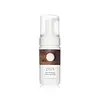What's inside
What's inside
 Key Ingredients
Key Ingredients

No key ingredients
 Benefits
Benefits

 Concerns
Concerns

 Ingredients Side-by-side
Ingredients Side-by-side

Water
Skin ConditioningCocamidopropyl Betaine
CleansingSodium Cocoyl Isethionate
CleansingBetaine
HumectantDiglycerin
HumectantAloe Barbadensis Leaf Juice
Skin ConditioningPhenoxyethanol
PreservativeSaccharide Isomerate
HumectantSodium Benzoate
MaskingEthylhexylglycerin
Skin ConditioningGuar Hydroxypropyltrimonium Chloride
Skin ConditioningPropylene Glycol
HumectantQuaternium-80
Citric Acid
BufferingPolysorbate 20
EmulsifyingParfum
MaskingNiacinamide
SmoothingSodium Citrate
BufferingBiotin
AntiseborrhoeicPotassium Sorbate
PreservativeTocopherol
AntioxidantWater, Cocamidopropyl Betaine, Sodium Cocoyl Isethionate, Betaine, Diglycerin, Aloe Barbadensis Leaf Juice, Phenoxyethanol, Saccharide Isomerate, Sodium Benzoate, Ethylhexylglycerin, Guar Hydroxypropyltrimonium Chloride, Propylene Glycol, Quaternium-80, Citric Acid, Polysorbate 20, Parfum, Niacinamide, Sodium Citrate, Biotin, Potassium Sorbate, Tocopherol
Water
Skin ConditioningGlycerin
HumectantPropylene Glycol
HumectantTea-Cocoyl Alaninate
CleansingTrehalose
HumectantCocamidopropyl Betaine
CleansingSodium Lauroyl Sarcosinate
CleansingButylene Glycol
HumectantDisodium Cocoyl Glutamate
CleansingPanthenol
Skin ConditioningSodium Cocoyl Glutamate
CleansingChlorphenesin
AntimicrobialOryza Sativa Extract
AbsorbentPhenoxyethanol
PreservativeOryza Sativa Bran Extract
Skin ConditioningO-Cymen-5-Ol
AntimicrobialIngredients Explained
These ingredients are found in both products.
Ingredients higher up in an ingredient list are typically present in a larger amount.
Cocamidopropyl Betaine is a fatty acid created by mixing similar compounds in coconut oil and dimethylaminopropylamine, a compound with two amino groups.
This ingredient is a surfactant and cleanser. It helps gather the dirt, pollutants, and other impurities in your skin to be washed away. It also helps thicken a product and make the texture more creamy.
Being created from coconut oil means Cocamidopropyl Betaine is hydrating for the skin.
While Cocamidopropyl Betaine was believed to be an allergen, a study from 2012 disproved this. It found two compounds in unpure Cocamidopropyl Betaine to be the irritants: aminoamide and 3-dimethylaminopropylamine. High-grade and pure Cocamidopropyl Betaine did not induce allergic reactions during this study.
Learn more about Cocamidopropyl BetainePhenoxyethanol is a preservative that has germicide, antimicrobial, and aromatic properties. Studies show that phenoxyethanol can prevent microbial growth. By itself, it has a scent that is similar to that of a rose.
It's often used in formulations along with Caprylyl Glycol to preserve the shelf life of products.
Propylene Glycol is an odorless, colorless liquid. As a humectant, it helps skin retain moisture. It also aids in delivering active ingredients.
Another role of this ingredient is preventing a product from melting or freezing. Propylene glycol also adds antimicrobrial properties to a product, elongating product lifespan.
This ingredient is considered an organic alcohol and commonly added into both cosmetics and foods.
Those with sensitive skin or conditions may develop a rash when using this ingredient.
Learn more about Propylene GlycolWater. It's the most common cosmetic ingredient of all. You'll usually see it at the top of ingredient lists, meaning that it makes up the largest part of the product.
So why is it so popular? Water most often acts as a solvent - this means that it helps dissolve other ingredients into the formulation.
You'll also recognize water as that liquid we all need to stay alive. If you see this, drink a glass of water. Stay hydrated!
Learn more about Water